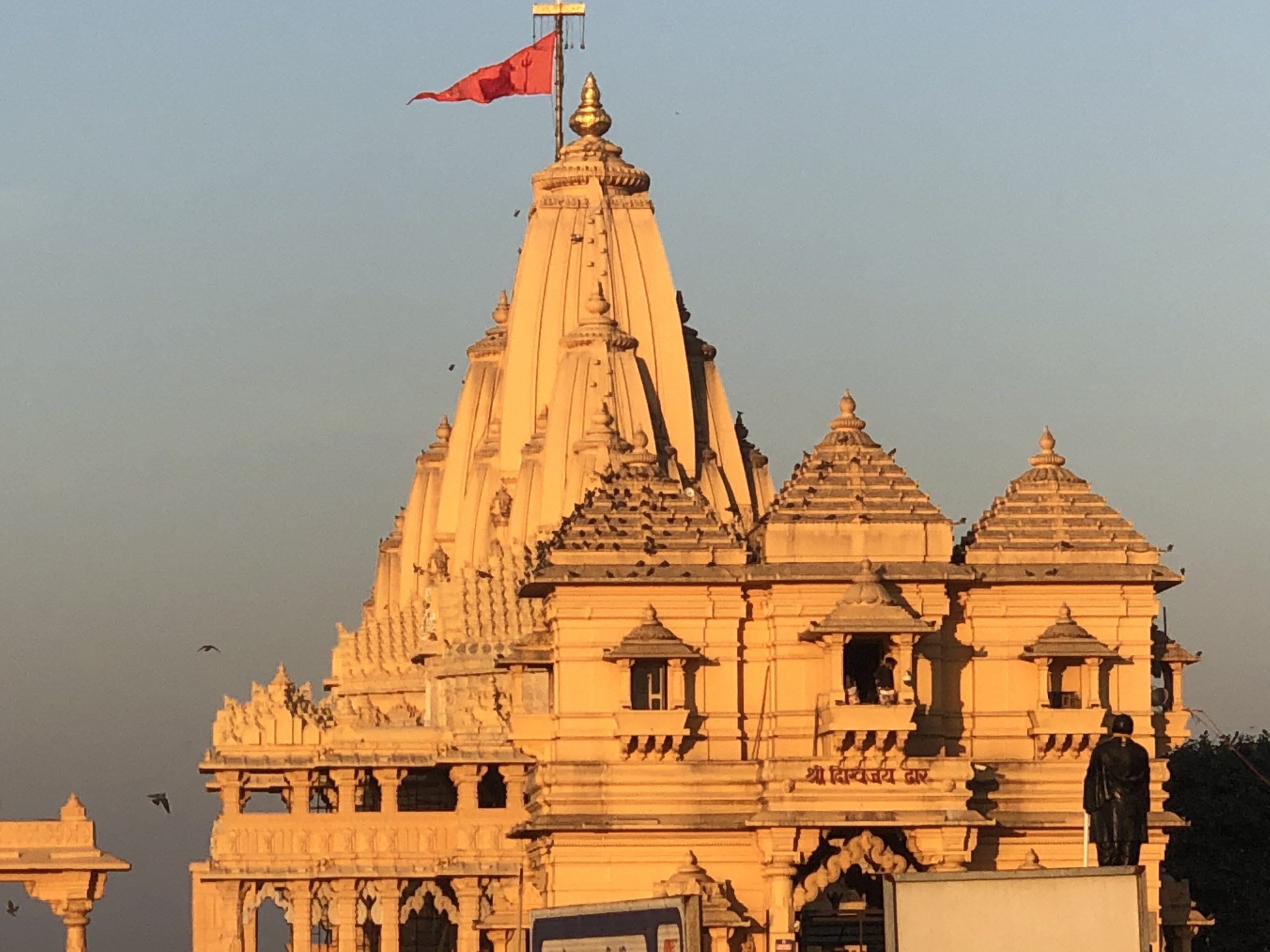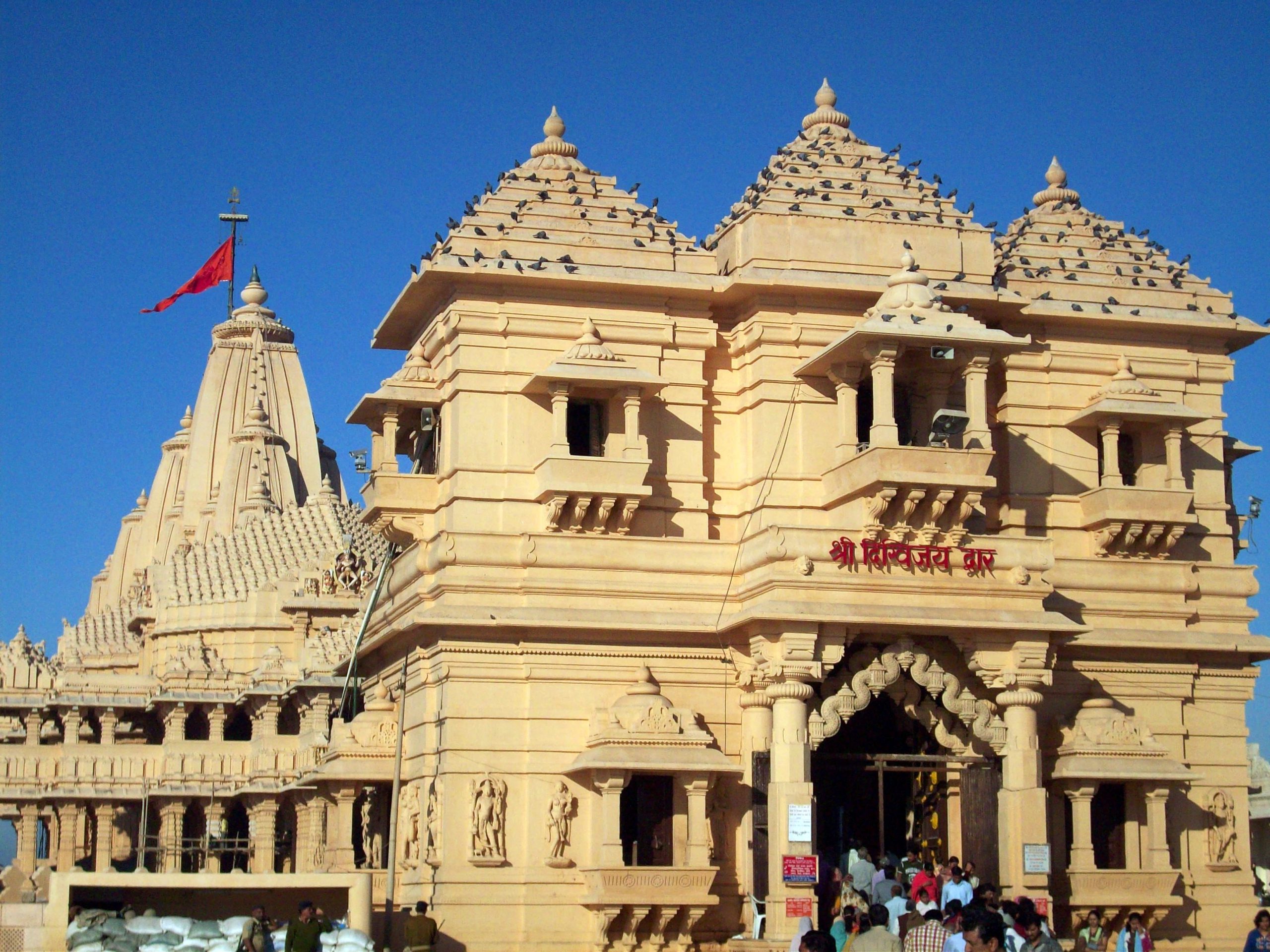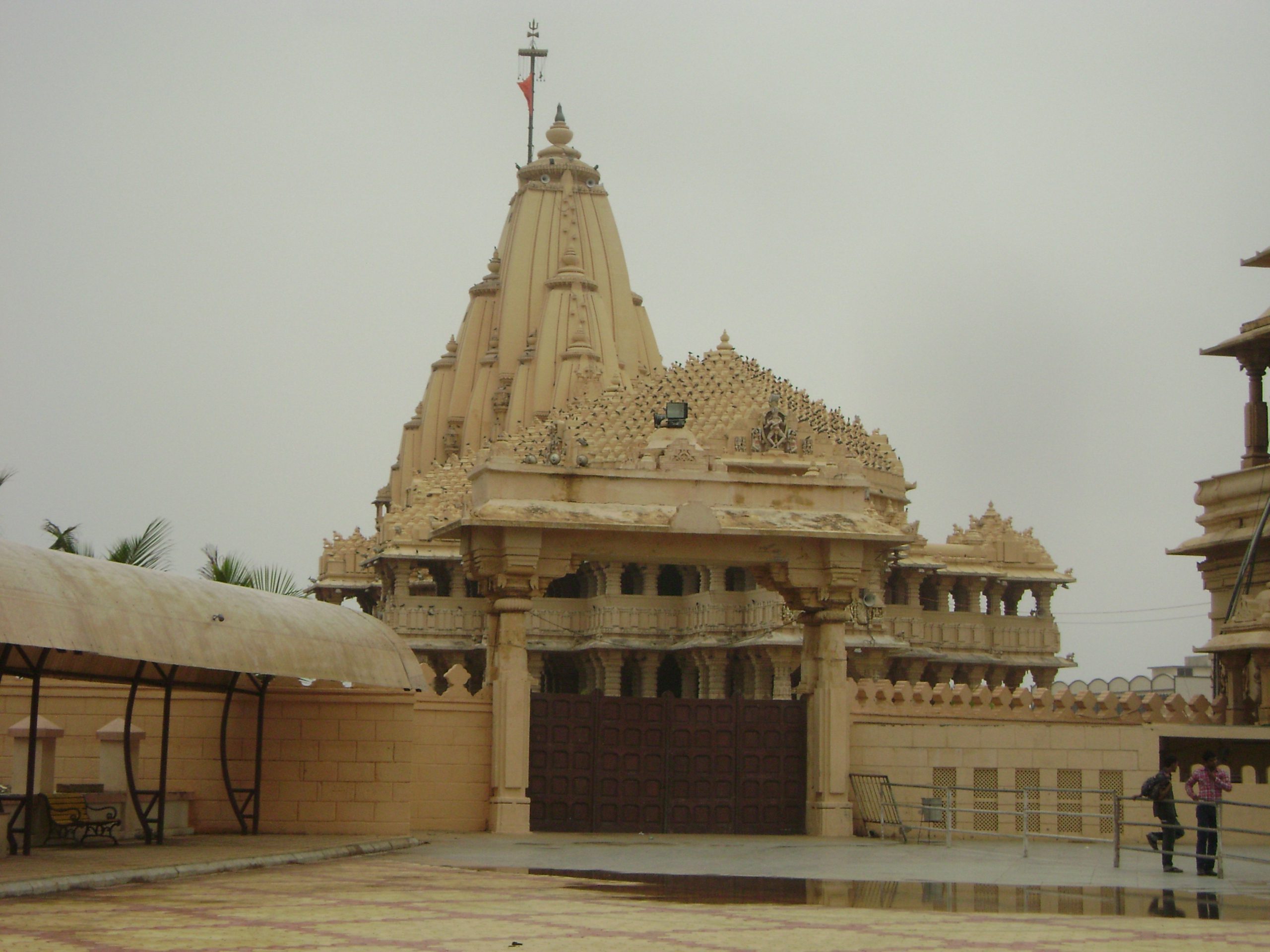The Somnath Temple is a renowned Hindu temple located in the Prabhas Patan near Veraval in Saurashtra, Gujarat, India. It holds immense historical, religious, and cultural significance in India. The temple is dedicated to Lord Shiva, and the term “Somnath” means “The Lord of the Moon” in Sanskrit.
The temple has a rich history and has been rebuilt several times due to destruction by various invasions and natural calamities. It is believed that the original temple was built by the Moon God himself, later reconstructed by Lord Krishna, and subsequently demolished and reconstructed many times over the centuries.
The present structure, inaugurated in 1951, stands as a symbol of resilience and Hindu faith. It’s a beautiful architectural marvel showcasing intricate carvings and impressive craftsmanship. The temple complex also includes smaller shrines, a museum, and beautiful gardens.
Somnath Temple attracts millions of devotees and tourists every year, not only for its religious importance but also for its historical significance and architectural beauty. The serene and spiritual ambiance, coupled with its coastal location, makes it a significant pilgrimage site in India.
Table of Content
History
The Somnath Temple, located in the state of Gujarat, India, is one of the most revered and ancient temples in the country. Its history spans several centuries, filled with destruction, reconstruction, and spiritual significance.
Ancient Origins: The original Somnath Temple is believed to have been built during ancient times, with varying estimates placing its creation anywhere between the 4th and 7th centuries. It was dedicated to Lord Shiva and was considered one of the twelve Jyotirlingas (sacred shrines of Shiva).
Invasions and Destruction: Throughout history, the temple faced several invasions and consequent destruction. The first recorded destruction took place in the early 11th century by Mahmud of Ghazni, a ruler from Afghanistan. Mahmud’s invasions targeted several temples in India, including Somnath, and the temple was looted and destroyed multiple times over the years.
Reconstruction: Despite the repeated destruction, the Somnath Temple was rebuilt multiple times by Hindu rulers. The temple’s restoration was a symbol of resilience and the undying spirit of the Hindu religion. It was reconstructed after each attack, sometimes using the remains of the previous structure.
Modern Era: In the modern era, efforts were made to rebuild the temple after India gained independence. In 1951, the then Deputy Prime Minister of India, Sardar Vallabhbhai Patel, and the President of India, Rajendra Prasad, laid the foundation for the new temple. The current structure stands as a testament to the rich cultural heritage of India and symbolizes the revival of the country’s spiritual and historical legacy.
The temple stands as a symbol of Hindu resilience and has significant cultural and religious importance, drawing pilgrims and visitors from all around the world.
Throughout its history, the Somnath Temple has gone through cycles of destruction and reconstruction, signifying the endurance of faith and the revival of cultural heritage. It remains an essential part of India’s religious and historical legacy.
Yearly Festivals
The Somnath Temple, located in the state of Gujarat, India, is one of the twelve Jyotirlinga shrines of Lord Shiva and holds significant religious and cultural importance. Several festivals and religious events are celebrated at the Somnath Temple throughout the year. Some of the major yearly festivals observed at the Somnath Temple include:
- Maha Shivaratri: This festival is one of the most significant celebrations at the Somnath Temple and is dedicated to Lord Shiva. It usually falls in February or March. Devotees fast, perform puja (worship), and offer prayers throughout the night.
- Shravan Month: The entire month of Shravan, which usually falls between July and August, is dedicated to Lord Shiva. Devotees observe various rituals, visit the temple, and offer special prayers and offerings on Mondays, which are considered highly auspicious.
- Kartik Purnima: Celebrated in the month of Kartik (October or November), this festival marks the day of the full moon. It holds significance as devotees take holy dips in rivers or sacred waters and offer prayers to Lord Shiva.
- Chaitra Navratri: This festival spans nine days and is dedicated to the worship of Goddess Durga. The temple sees a significant influx of devotees during this period, usually in March or April.
- Diwali: The festival of lights, Diwali, is also celebrated at the Somnath Temple. The temple is adorned with lights, and special prayers and ceremonies are held.
These festivals draw a large number of devotees and visitors to the Somnath Temple. The celebrations are marked by various rituals, ceremonies, cultural events, and special prayers dedicated to the deities.
The dates for these festivals might vary slightly from year to year based on the Hindu lunar calendar. It’s recommended to check the temple’s calendar or with local sources for specific dates each year.
Daily Pujas
The Somnath Temple, dedicated to Lord Shiva, is one of the most sacred shrines in India. The temple conducts various pujas (rituals) daily to honor the deity. Please note that the specifics of the daily pujas may have slight variations and could change over time, but here is a general overview of the usual daily pujas performed at the Somnath Temple:
- Mangala Aarti: This is the early morning ritual that typically occurs around sunrise. It is a sacred ritual where the deity is awakened, and prayers and hymns are sung in praise of Lord Shiva.
- Abhishek (Rudrabhishek): The Abhishek is a bathing ritual where the Shiva Linga is bathed with various sacred items like milk, water, ghee, honey, curd, etc. The Rudrabhishek is a specific form of Abhishek that involves recitation of Vedic mantras and offering of these sacred items to Lord Shiva.
- Shringar Aarti: This puja involves adorning the deity with various decorative items such as clothes, jewelry, and flowers, accompanied by hymns and prayers.
- Bhog Aarti: The Bhog Aarti is an offering of food to the deity. It is a ritual of offering specially prepared food to the deity, which is later distributed as prasad (blessed food) to the devotees.
- Sandhya Aarti: This is the evening aarti performed at dusk. Devotees gather to witness the evening prayers and hymns dedicated to Lord Shiva.
- Shayana Aarti: The final aarti of the day, performed before the deity is put to rest for the night. It symbolizes the ceremonial closure of the day’s rituals.
In addition to these daily pujas, there might be other rituals and ceremonies performed on specific days or during festivals at the Somnath Temple. The timings and specific practices might vary; hence, it’s always a good idea to confirm the schedule with the temple authorities or priests for the most accurate and updated information.
How To Reach
The Somnath Temple, located in the state of Gujarat, India, is a significant pilgrimage site. There are various ways to reach the Somnath Temple:
By Air:
The nearest airport to Somnath is the Diu Airport (approximately 85 km away) and the Keshod Airport (approximately 55 km away). From there, you can hire a taxi or take a bus to reach Somnath.
By Train:
Veraval Railway Station is the nearest railway station to Somnath (around 6 km away). Trains connect Veraval to major cities like Mumbai, Delhi, Ahmedabad, etc. From Veraval, you can take a taxi, an auto-rickshaw, or a bus to reach Somnath.
By Road:
Somnath is well-connected by roads. State transport and private buses run from various cities in Gujarat to Somnath. You can also hire a taxi or drive by car if you prefer a more direct and private means of transportation.
Local Transport:
Once you reach Somnath, you can move around the city by using auto-rickshaws, taxis, or cycle-rickshaws.
Please check for the most recent transportation options and any travel advisories before planning your visit, as the availability and accessibility of transportation methods might have changed since my last update in January 2022.
Where To Stay
Somnath, a prominent pilgrimage site in India, has several accommodation options suitable for visitors. Some of the places to stay near Somnath Temple include:
- Somnath Trust Guest House: Managed by the Somnath Temple trust, this guest house is a convenient option for those looking to stay close to the temple.
- Hotel Shubh Suvidha: A budget-friendly hotel situated near the temple offering comfortable rooms and basic amenities.
- The Fern Residency Somnath: A more upscale option, offering a luxurious stay with excellent facilities and services.
- Sarovar Portico Somnath: This hotel provides a blend of comfort, convenience, and a good location for visitors to the temple.
- Hotel Sun Plaza: Another mid-range hotel with decent facilities and a short distance from the Somnath Temple.
- Divine Resort: A resort offering a peaceful and serene stay, a little away from the hustle near the temple.
When planning a visit to Somnath Temple, it’s recommended to book accommodation in advance, especially during peak seasons or festival times, to ensure availability and a hassle-free stay.




